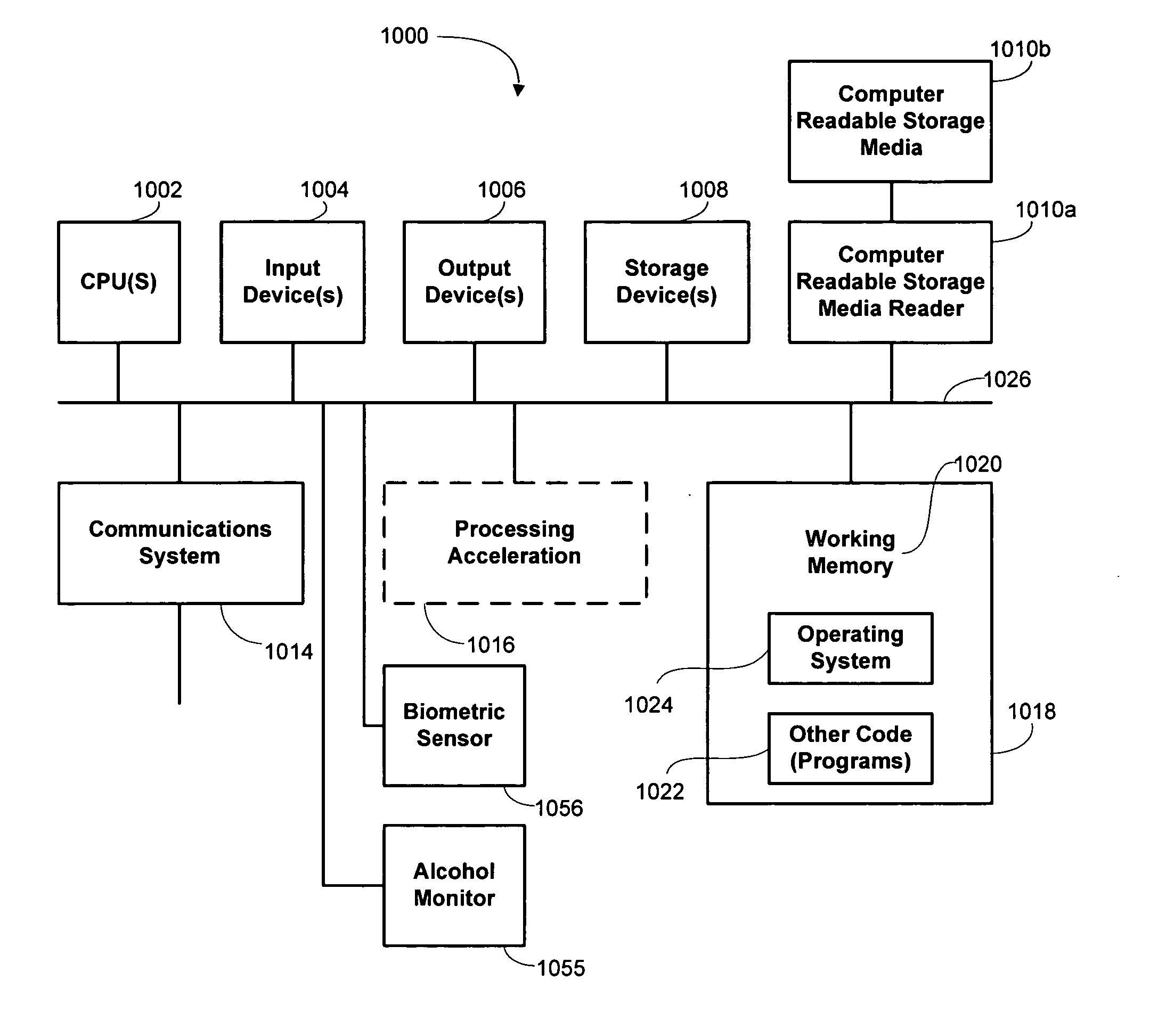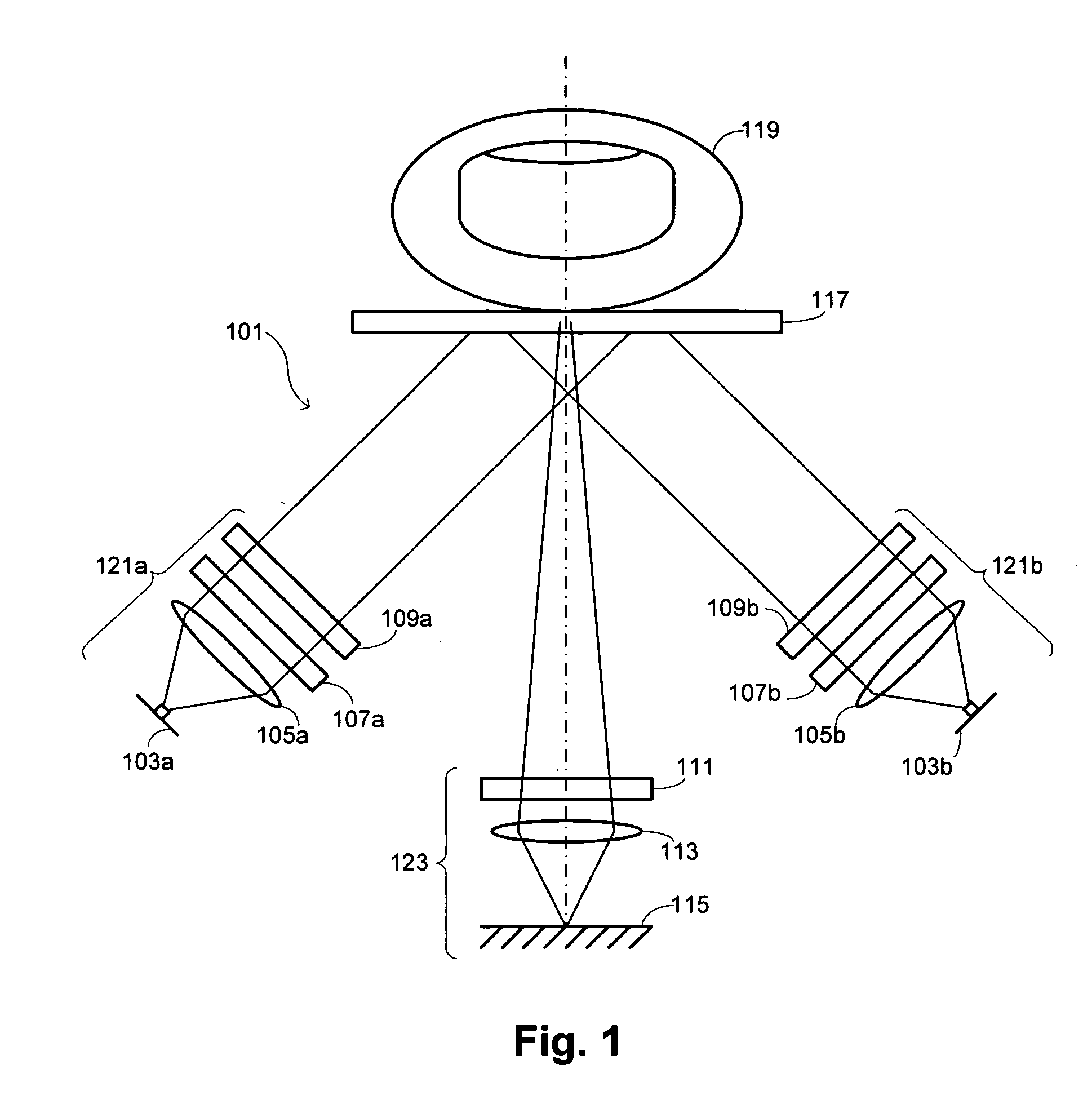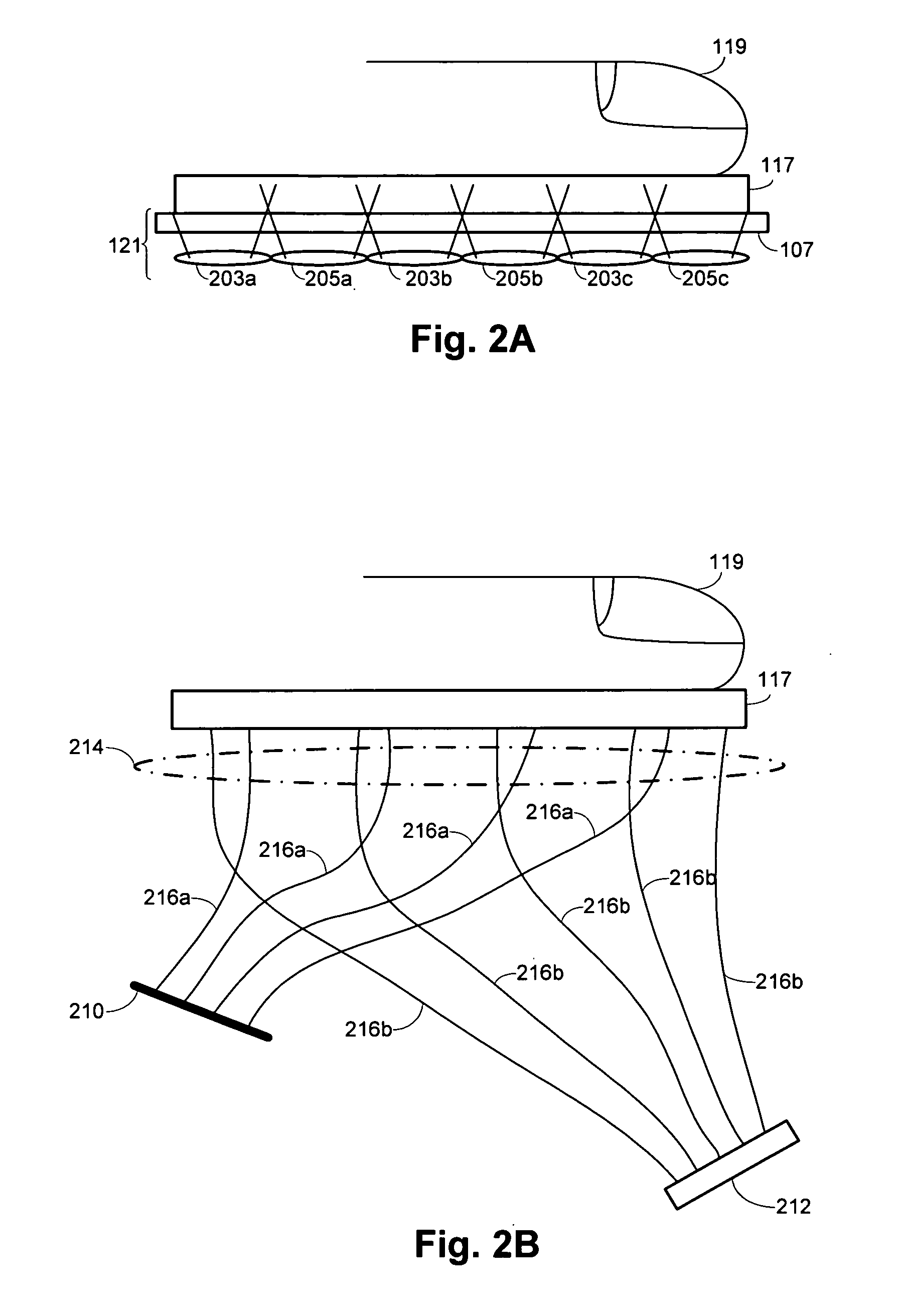Multispectral biometric sensor
a biometric sensor and multi-spectral technology, applied in the field of biometrics, can solve the problems of reducing image contrast, poor image contrast, and particularly susceptible optical fingerprint readers to image quality problems
- Summary
- Abstract
- Description
- Claims
- Application Information
AI Technical Summary
Benefits of technology
Problems solved by technology
Method used
Image
Examples
Embodiment Construction
1. Overview
[0042] Embodiments of the invention provide methods and systems that allow for the collection and processing of integrated, multifactor biometric measurements. These integrated, multifactor biometric measurements may provide strong assurance of a person's identity, as well as of the authenticity of the biometric sample being taken. In some embodiments, a sensor provides a plurality of discrete optical wavelengths that penetrate the surface of the skin, and scatter within the skin and / or underlying tissue. As used herein, reference to “discrete wavelengths” is intended to refer to sets of wavelengths or wavelength bands that are treated as single binned units—for each binned unit, information is extracted only from the binned unit as a whole, and not from individual wavelength subsets of the binned unit. In some cases, the binned units may be discontinuous so that when a plurality of discrete wavelengths are provided, some wavelength between any pair of the wavelengths or...
PUM
 Login to View More
Login to View More Abstract
Description
Claims
Application Information
 Login to View More
Login to View More - R&D
- Intellectual Property
- Life Sciences
- Materials
- Tech Scout
- Unparalleled Data Quality
- Higher Quality Content
- 60% Fewer Hallucinations
Browse by: Latest US Patents, China's latest patents, Technical Efficacy Thesaurus, Application Domain, Technology Topic, Popular Technical Reports.
© 2025 PatSnap. All rights reserved.Legal|Privacy policy|Modern Slavery Act Transparency Statement|Sitemap|About US| Contact US: help@patsnap.com



